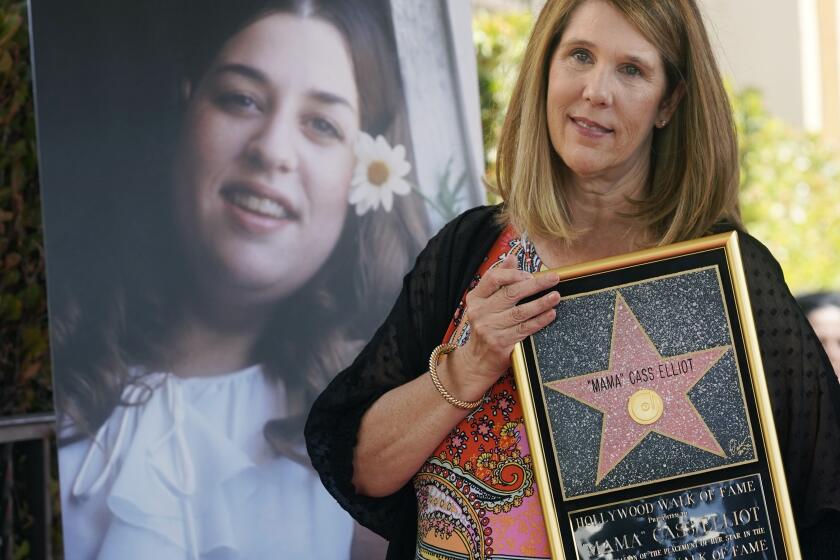Keeping the Ear on Dance
Latin jazz, almost by definition, demands versatility. Rarely played in isolation, it is music that requires players to shift from rhythmic dance music to crisp ensemble playing to free-flying solos.
The reason for this musical adaptability comes down to one word: dancing. The arrival of bebop in the ‘40s transformed jazz from a listening/dancing music to a less interactive, more passive experience. But it was a transformation that never happened in Latin music, which remained intimately tied to rhythmic body movement. (Ironically, Afro-Cuban tinged bop from the beginning has been, and continues to be, popular with dancing audiences.)
So these are albums with varying degrees of pure jazz and improvisation--far more in the case of the Bunnett CD, considerably less in the Los Van Van outing (which many purists would not define as jazz, at all). But they also are albums that suggest that at least one of the productive pathways for jazz into the 21st century travels through the kind of emotionally communicative, physically stimulating expression typified by Latin jazz.
Bunnett, a Canadian soprano saxophonist and flutist, is not the only musician aware of that pathway. Roy Hargrove and Steve Coleman have recorded in Havana, and Ry Cooder won a Grammy award this year with his recording of Cuban all-star musicians. But Bunnett has been at her task for years, with “Spirits of Havana” in 1992 and her Blue Note debut album, “The Cuban Piano Masters,” and as a sideperson on “Havana Flute Summit” and Hilario Duran’s “Killer Tumbao.”
Although supporters of the Helms-Burton Law, which calls for penalties on foreigners who do business with Cuba, have referred to her as “Havana Jane,” and the reference has reportedly impacted her American touring possibilities in a negative fashion, Bunnett takes an apolitical stance, preferring to concentrate upon the music. The results, in “Chamalongo” are never less than compelling. The most diverse album she has made thus far, it includes surging Afro-Cuban jazz, folkloric melodies and rhythms, hard swinging descarga jam sessions, the chants of santeria and rich emotional vocals from the late Merceditas Valdes.
Bunnett’s sturdy soprano saxophone and articulate flute weave freely throughout the ensembles, an unexpected but entirely compatible element in even the most Cuban of numbers. Listen, for example, to the stunning collaboration with Valdes on the one-time Cuban hit song, “Amor Por Ti”. She is aided by powerful playing from pianists Hilario Duran and the 72-year-old Cuban jazz veteran, Frank Emilio. And her introduction of such young Cuban artists as tenor saxophonist Yosvany Terry and bassist Carlitos del Puerto underscores the continuing high level evolution of jazz in the Caribbean island nation.
Los Van Van, now nearly 30 years old, had the crowd dancing in the aisles at last year’s Playboy Jazz Festival, and is scheduled to return for an encore in June. Structured around the classic charanga format, Los Van Van’s music, from its inception in 1969, transformed a sweet-sounding dance music into a style that bandleader Juan Formell describes as songo--a contemporary variation on son, the most important musical form in Cuban song and dance. In his variation, it adds a brawny trombone section which recalls the Stan Kenton sound, and upfront, charismatic vocals--currently from three singers--reminiscent of the energies of rock.
“Te Pone La Cabeza Mala” (roughly, “This’ll mess up your head”) typifies all these elements, with the heated trombones constantly thrusting ebulliently thrusting through a timbral mix of flute and violins. And, reaffirming Los Van Van’s insistent streetwise attitude, the songs are filled with satirical references to Cuban life. (“The bread line is ideal,” says Formell, “you hear so many things.”)
It is, by any definition, music to make a listener dance, its jazz-based charts synchronizing perfectly with the topical lyrics and the body-moving rhythms. Expect Los Van Van to once again have the Playboy crowd on its feet June 14.
*
Albums are rated on a scale of one star (poor), two stars (fair), three stars (good) and four stars (excellent).
More to Read
The biggest entertainment stories
Get our big stories about Hollywood, film, television, music, arts, culture and more right in your inbox as soon as they publish.
You may occasionally receive promotional content from the Los Angeles Times.






